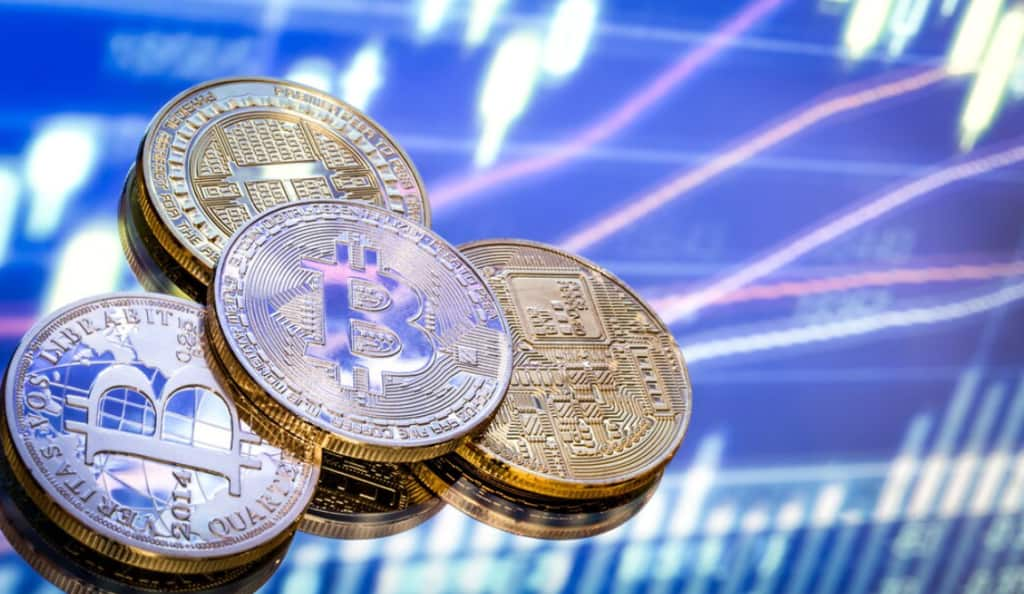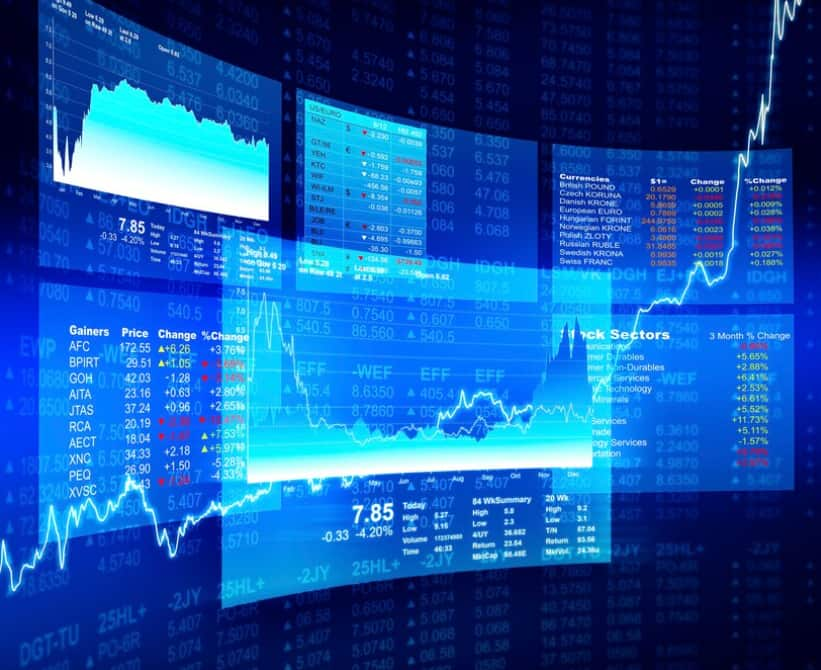Decentralized finance, better known as DeFi, is currently evolving as the most rapid growth sector within the Web3 universe. The financial power that goes beyond traditional banking and into staking, market-making, and other decentralized actions is being harnessed by DeFi. This article serves as an idyllic guide for you to understand investment in the best DeFi coins in the market.
Key Points:
- Decentralized Exchanges (DEXs) are ruling the DeFi space, with Uniswap (UNI) boasting a substantial $4.3 billion market capitalization;
- When it comes to staking protocols, Lido (LIDO) takes the lead with an impressive $20 billion Total Value Locked (TVL);
- Aave (AAVE) reigns supreme in the lending and borrowing sector, amassing a staggering $6.81 billion TVL;
- GMX (GMX) holds the title of the largest DeFi derivatives protocol, measured by TVL;
- Ethereum remains the primary blockchain underpinning the DeFi ecosystem, solidifying ETH as a pivotal asset within the space.
| Protocol | Token | Market Cap | TVL | Chains | Type |
|---|---|---|---|---|---|
| Uniswap | UNI | $4.3 billion | $4 billion | Ethereum, Arbitrum, Polygon, Optimism, Celo | DEX |
| Curve Finance | CRV | $506 million | $2.48 billion | Ethereum, Avalanche, Arbitrum, Binance Smart Chain, Fantom, Harmony, Optimism, Polygon, Aurora, Celo, Gnosis, Moonbeam, Kava | DEX |
| PancakeSwap | CAKE | $595 million | $1.56 billion | Binance (BSC), Aptos, Ethereum | DEX |
| Balancer | BAL | $191 million | $862 million | Ethereum, Arbitrum, Polygon, Optimism, Gnosis | DEX |
| Lido | LIDO | $2.34 billion | $20 billion | Ethereum, Solana, Moonbeam, Moonriver, TerraClassic | Staking |
| Rocket Pool | RPL | $540 million | $2.71 billion | Ethereum | Staking |
| Aave | AAVE | $1.28 billion | $6.81 billion | Ethereum, Polygon, Avalanche, Optimism, Arbitrum, Fantom, Harmony | Lending/ Borrowing |
| Just | JST | $248 million | $5.87 billion | Tron | Lending/ Borrowing |
| Compound | COMP | $351 million | $2.07 billion | Ethereum | Lending/ Borrowing |
| GMX | GMX | $376 million | $872 million | Avalanche, Arbitrum | Derivative |
| dYdX | DYDX | $801 million | $311 million | Ethereum | Derivative |
If you’re interested in discovering the best DeFi coins, you may also like to explore the capabilities of Dexscreener.
DeFi Categories by Total Locked Value
The provided data, sourced from DeFiLlama, gives an insightful overview of the distribution of assets across various sectors in the decentralized finance (DeFi) market. This information is crucial for understanding the landscape of DeFi investments.
We will now delve into an analysis of these sectors, converting their values into percentages. This will assist in forming a strategic approach for allocating investments in a DeFi portfolio.
Total Value in DeFi Market: $81 billion USD
- Decentralized Exchanges (DEXs): 31%;
- Lending Platforms: 17%;
- Staking Services: 13%;
- Collateralized Debt Positions (CDP): 12%;
- Blockchain Bridges: 11%;
- Miscellaneous DeFi Segments: 14%.
Top 4 Tokens for DEX Protocols

Decentralized exchanges (DEXs) differ from traditional exchanges by enabling users to retain control over their private keys, enhancing security for cryptocurrency holders.
Uniswap
- Protocol: Uniswap (Versions 1, 2 & 3);
- Token: UNI;
- Market Capitalization: $3.84 billion;
- Total Value Locked (TVL): $3.6 billion;
- Supported Blockchains: Ethereum, Arbitrum, Polygon, Optimism, Celo.
About Uniswap (UNI):
As the leading decentralized exchange protocol, Uniswap revolutionizes peer-to-peer cryptocurrency trading by providing liquidity to a wide array of ERC-20 tokens through automated market makers. Launched in 2018, Uniswap quickly became a pioneer in the DEX space. As per DefiLlama, Uniswap ranks as the 7th largest in the decentralized finance (DeFi) sector based on its TVL. The Uniswap ecosystem is powered by its native token, ‘UNI’.
Curve Finance
- Protocol: Curve Finance;
- Token: CRV;
- Market Capitalization: $573 million;
- Total Value Locked (TVL): $2 billion;
- Supported Blockchains: Ethereum, Avalanche, Arbitrum, Binance Smart Chain, Fantom, Harmony, Optimism, Polygon, Aurora, Celo, Gnosis, Moonbeam, Kava.
Exploring Curve Finance (CRV):
Established in 2010, Curve ranks as the second-largest DEX protocol in 2023. Similar to Uniswap, Curve utilizes automated market makers and liquidity pools to facilitate trading in numerous crypto pairs. Despite having a smaller market share than Uniswap, Curve stands out for its interoperability with approximately 12 blockchain networks, compared to Uniswap’s support for four. The Curve DAO, governed by holders of the ‘CRV’ token, oversees the protocol’s operation.
PancakeSwap
- Protocol: PancakeSwap (AMM, AMM1 & StableSwap);
- Token: CAKE;
- Market Capitalization: $695 million;
- Total Value Locked (TVL): $1.48 billion;
- Supported Blockchains: Binance Smart Chain (BSC), Aptos, Ethereum.
Overview of PancakeSwap (CAKE):
As the premier DEX on the Binance blockchain (BSC), PancakeSwap leads in usage and volume. It operates on automated market maker mechanisms, similar to other DEXs on this list. PancakeSwap also functions on Aptos and Ethereum networks, providing versatility. A notable aspect of PancakeSwap is its competitive fee structure, which is generally lower than that of Uniswap. The platform’s native token, ‘CAKE’, serves not only as a governance token but also as an incentive for liquidity providers participating in the PancakeSwap DEX.
Balancer
- Protocol: Balancer (Versions 1 & 2);
- Token: BAL;
- Market Capitalization: $220 million;
- Total Value Locked (TVL): $849 million;
- Supported Blockchains: Ethereum, Arbitrum, Polygon, Optimism, Gnosis.
Overview of Balancer (BAL):
Balancer sets itself apart as a DEX by offering unique, non-standardized liquidity pools. Unlike most DEXs that limit their pools to two cryptocurrencies, Balancer provides the flexibility to include up to eight different tokens in a single pool. This feature distinguishes it from platforms like Uniswap, although their core functionalities are similar. The Balancer ecosystem is driven by the ‘BAL’ token, an ERC-20 token that facilitates various aspects of the platform’s operations.
Top 2 Decentralized Staking Protocol Tokens to Watch
Decentralized staking protocols offer cryptocurrency enthusiasts a way to engage in staking activities while maintaining a decentralized approach. In the wake of increased scrutiny from the SEC on centralized crypto staking in 2023, the appeal and growth of decentralized staking protocols have surged significantly. Alongside their increasing popularity, the value of tokens associated with these protocols has also been on the rise. Here are a couple of the more prominent decentralized crypto-staking protocols that are worth considering for investment in 2023.
Lido (LIDO)
- Protocol: Lido (Versions 1, 2, 3 & Arc);
- Token Symbol: LIDO;
- Market Capitalization: $2.76 billion;
- Total Value Locked (TVL): $18 billion;
- Supported Blockchains: Ethereum, Solana, Moonbeam, Moonriver, TerraClassic.
Overview of Lido:
Lido stands out as the leading crypto-staking decentralized application (dApp), notable for its high TVL of $9.19 billion, which places it significantly ahead of its competitors in the staking landscape. Lido introduces an innovative approach to staking through ‘pools’, allowing investors to stake their crypto flexibly. These ‘liquid’ staking pools enable investors to unstake their coins whenever they choose. The LIDO governance token empowers its holders to have a say in the protocol’s decisions, including matters related to staking rewards.
Rocket Pool (RPL)
- Protocol: Rocket Pool;
- Token Symbol: RPL;
- Market Capitalization: $643 million;
- Total Value Locked (TVL): $2.3 billion;
- Supported Blockchain: Ethereum.
Introduction to Rocket Pool:
Rocket Pool is renowned as the second-largest staking protocol, specializing in staking the Ethereum (ETH) coin. Unlike Lido, which operates with a limited set of validating nodes, Rocket Pool democratizes the process by allowing anyone to become a node, thus diversifying the node risk. However, it’s noteworthy that the annual percentage rate (APR) for staking ETH in Rocket Pool is currently lower compared to Lido. The RPL token, based on the ERC-20 standard, grants its holders voting rights on protocol modifications.
Top 3 Coins for Lending and Borrowing Protocols

Cryptocurrency lending and borrowing platforms are revolutionizing the financial world by offering blockchain-based solutions that provide higher annual percentage rates (APRs) than traditional finance methods. These platforms utilize over-collateralization to ensure the security and stability of loans.
Aave (AAVE)
- Protocol: Aave (Versions 1, 2, 3 & Arc);
- Token Symbol: AAVE;
- Market Capitalization: $1.43 billion;
- Total Value Locked (TVL): $5.7 billion;
- Supported Blockchains: Ethereum, Polygon, Avalanche, Optimism, Arbitrum, Fantom, Harmony.
Overview of Aave:
Aave, ranking as the fourth-largest decentralized finance (DeFi) protocol globally, leads the lending/borrowing sector. Participants in the cryptocurrency market can deposit their digital assets into Aave’s liquidity pools to earn interest. Conversely, these pools also provide borrowers with access to cryptocurrencies at favorable rates. The AAVE token, adhering to the ERC-20 standard, grants its holders governance rights, allowing them to vote on network updates.
Just (JST)
- Protocol: JustLend, JustStables;
- Token Symbol: JST;
- Market Capitalization: $268 million;
- Total Value Locked (TVL): $5.9 billion;
- Supported Blockchain: Tron.
Overview of Just:
Just is the preferred lending and borrowing platform on the Tron blockchain. This protocol features a dual-token system, comprising JST and USDJ (JustStable), a stablecoin pegged to the US dollar. The JST token serves multiple purposes, including governance voting and interest payments, underpinning the functionality of the protocol’s ecosystem.
Compound (COMP)
- Protocol: Compound (Version 3);
- Token Symbol: COMP;
- Market Capitalization: $451 million;
- Total Value Locked (TVL): $1.16 billion;
- Supported Blockchain: Ethereum.
Overview of Compound:
Compound operates as a lending and borrowing platform on the Ethereum blockchain, sharing similarities with Aave. Unique to Compound is its focus on Ethereum without expanding to other Layer 1 or Layer 2 networks. Despite its more concentrated market, Compound offers substantial liquidity and remains a notable player for yield farming activities. The COMP token serves dual purposes within the Compound ecosystem, acting as both a utility and a governance token.
Top 2 Notable Decentralized Derivatives Trading Protocols
Decentralized derivatives trading protocols are innovative platforms in the blockchain industry, providing an alternative to traditional financial derivatives. These protocols operate on blockchain technology, enabling users to trade contracts whose value is based on underlying crypto assets. They offer decentralized versions of familiar futures and options trading from the conventional financial world.
GMX
- Protocol Name: GMX;
- Token Symbol: GMX;
- Market Capitalization: $484 Million;
- Total Value Locked (TVL): $540 Million;
- Operational Networks: Avalanche, Arbitrum.
Overview of GMX:
GMX stands out as a notable protocol that emerged profitably in 2022. It’s a DeFi platform available exclusively on the Avalanche and Arbitrum networks. GMX serves as a decentralized platform for spot and perpetual exchange trading. It boasts the title of being the largest derivative protocol to date. Users can connect their self-custody wallets to GMX and engage in leveraged trading on assets like BTC, ETH, and AVAX, with leverage options reaching up to 50x.
The GMX token serves a dual role as both the utility and governance token within the GMX ecosystem.
dYdX
- Protocol Name: dYdX;
- Token Symbol: DYDX;
- Market Capitalization: $916 Million;
- Total Value Locked (TVL): $356 Million;
- Operational Network: Ethereum.
Overview of dYdX:
dYdX operates as a derivatives protocol on the Ethereum blockchain, offering users the ability to engage in margin trading with popular cryptocurrencies like BTC and ETH. The maximum leverage offered on dYdX is 25x.
The DYDX token within this protocol functions as a governance token, as well as a utility token, being utilized for transaction fee payments and in the staking rewards system.
Conclusion
Investment in DeFi coins demands a strategic understanding of the various segments in the DeFi market. Whether you’re interested in DEX, lending/borrowing, or staking protocols, it’s essential to stay updated about these rapidly-changing markets. DeFi offers a plethora of opportunities for crypto enthusiasts, but a well-informed approach can maximize your success in this incredible financial revolution.
Remember, the world of DeFi continues to evolve. Always stay updated with the latest trends and insights in the market.